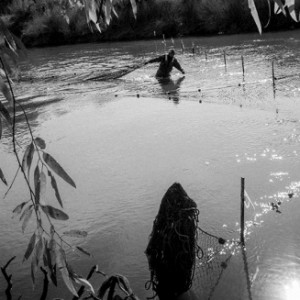Federal Water Tap, March 30: Rules for Fracking on Public Lands and an Analysis of Fracking Fluids
The Rundown
New fracking rules seek to protect water sources while the EPA assesses fracking data. Most of the West already has a federal drought designation. The U.S. Geological Survey reminds Congress that many details about national water use are a black box. A bill to boost funding for tribal irrigation repairs moves out of committee. And: more Superfund sites.
“Growing populations, increased energy development, and the uncertain effects of a changing climate magnify the need for an improved understanding of water use and water availability. However, no comprehensive and current national assessment of water resources exists.” — William Werkheiser, associate director for water, U.S. Geological Survey, testifying before a House Natural Resources subcommittee about the fiscal year 2016 budget, which includes funds for developing a census of national water supply.
By the Numbers
92 billion gallons: Amount of water used for hydraulic fracturing between January 1, 2011, and February 28, 2013 (U.S. Environmental Protection Agency)
279: Number of counties, in 11 western states from Oregon to Texas, that have earned drought disaster designations in 2015 (U.S. Department of Agriculture)
Reports and Studies
Fracking Fluids and Water Use
Methanol, hydrochloric acid, and petroleum distillates, a solvent made from crude oil, are the most common chemicals used in the fracking process, according to a U.S. Environmental Protection Agency analysis of data in FracFocus, a database for voluntary reporting of fracking information. The data is not comprehensive.
For states with a significant number of reports, water use per fracking job was highest in Arkansas (a median of 5.2 million gallons per well), Louisiana (5.1 million), and Pennsylvania (4.2 million). Water use was lowest in California (77,000 gallons per well), New Mexico (172,000), and Utah (303,000). The variety reflects geological differences, as well as a variety of well types.
Counties with the highest total volume of water used are located in northeastern Pennsylvania, northern Colorado, western North Dakota, and several regions of Texas: the Permian Basin, South Texas, and the Dallas-Fort Worth area.
The study assessed 38,050 disclosures made between January 1, 2011, and February 28, 2013 by companies operating in 20 states.
U.S. Streamflow Report
The northern tier of the United States was wetter than normal in 2014 while the Southwest was dry, according to the U.S. Geological Survey’s annual streamflow review. Despite recent droughts, the most extreme low-flow years nationwide occurred in the 1950s.
News Briefs
Irrigation Infrastructure
The Senate Indian Affairs Committee approved a bill that allocates $US 35 million per year to repair aging irrigation projects on tribal lands. The bill is sponsored by John Barrasso, a Wyoming Republican.
Fracking on Federal Lands
Claiming the need to protect groundwater resources, the Obama administration will require stronger safeguards for hydraulic fracturing taking place on federal lands. Wells must meet stricter design standards, and fracking wastewater must be stored in above-ground tanks rather than lined pits. Companies must also submit a list of chemicals used in the fracking process to the FracFocus registry within 30 days of fracturing a well.
A Senate Energy and Natural Resources subcommittee will hold a hearing on the new rules on April 16.
Superfund Additions
A site in central Indiana with groundwater contaminated by industrial chemicals is one of two new additions to Superfund, the federal list of high-priority pollution cleanup projects. Six other sites, including a contaminated groundwater site in central Texas, are proposed for listing.
Israel Water-Energy Partnership
Nearly one-fifth of Congress members signed a letter urging support for a water and energy research partnership between the United States and Israel. The representatives are seeking $US 2 million in funding for the joint program that began in 2008 and has investigated energy efficiency improvements, hydroelectric power, and using less energy to cleanse wastewater.
Federal Water Tap is a weekly digest spotting trends in U.S. government water policy. To get more water news, follow Circle of Blue on Twitter and sign up for our newsletter.
Brett writes about agriculture, energy, infrastructure, and the politics and economics of water in the United States. He also writes the Federal Water Tap, Circle of Blue’s weekly digest of U.S. government water news. He is the winner of two Society of Environmental Journalists reporting awards, one of the top honors in American environmental journalism: first place for explanatory reporting for a series on septic system pollution in the United States(2016) and third place for beat reporting in a small market (2014). He received the Sierra Club’s Distinguished Service Award in 2018. Brett lives in Seattle, where he hikes the mountains and bakes pies. Contact Brett Walton






Leave a Reply
Want to join the discussion?Feel free to contribute!